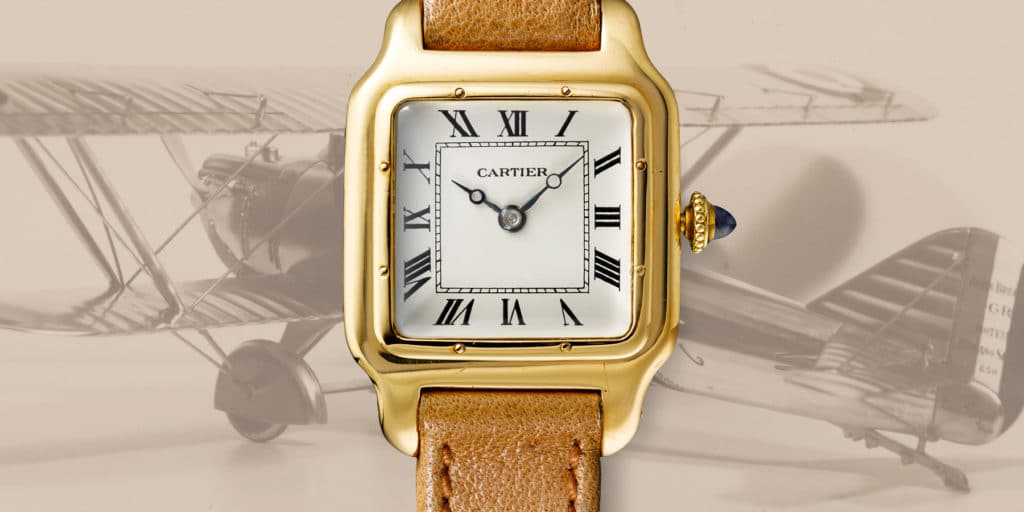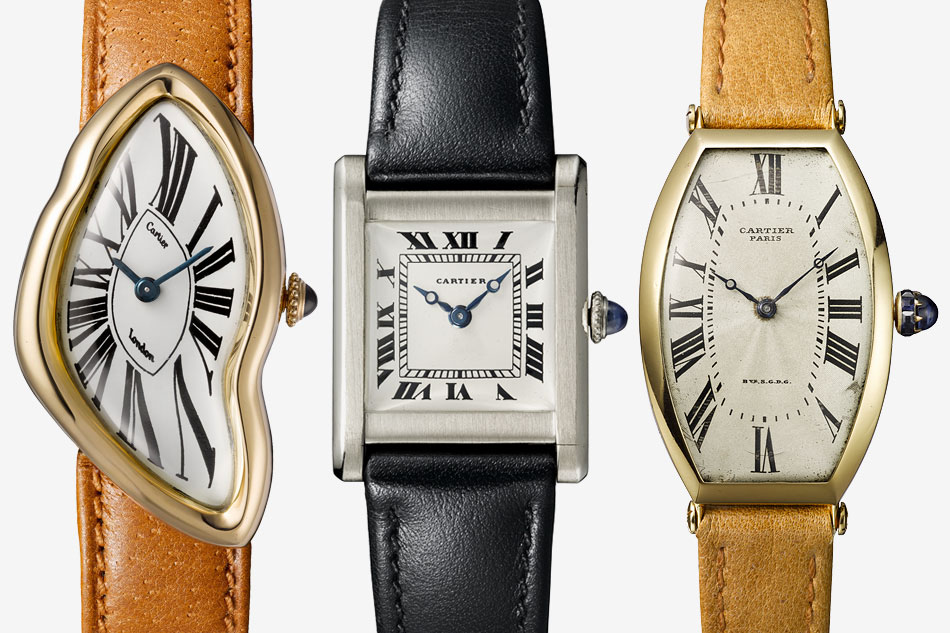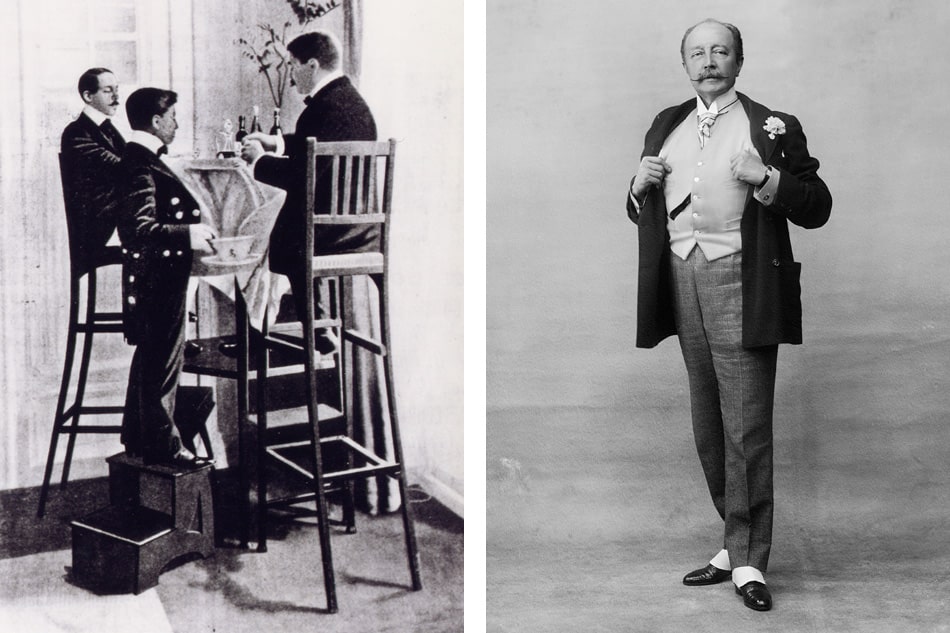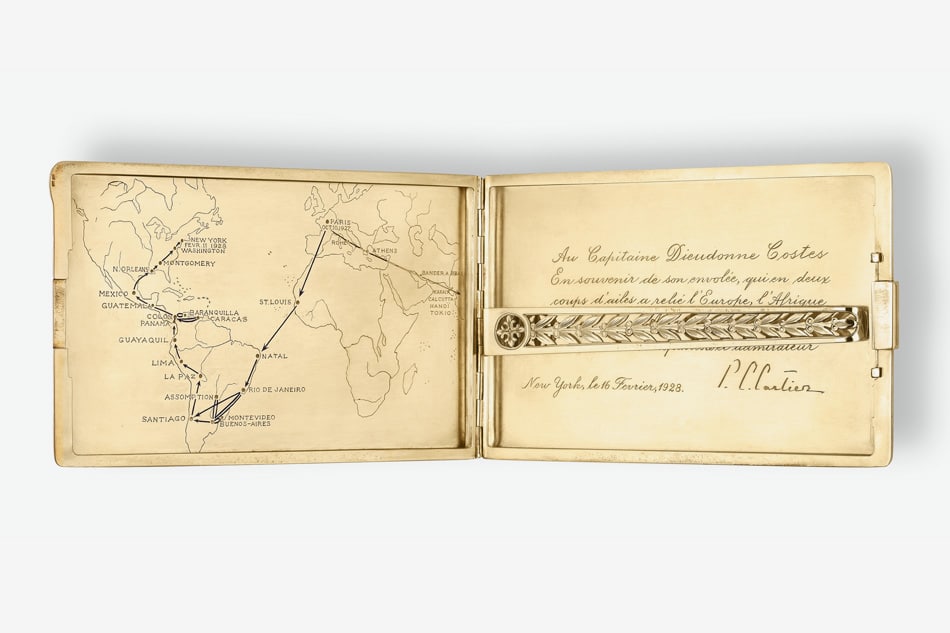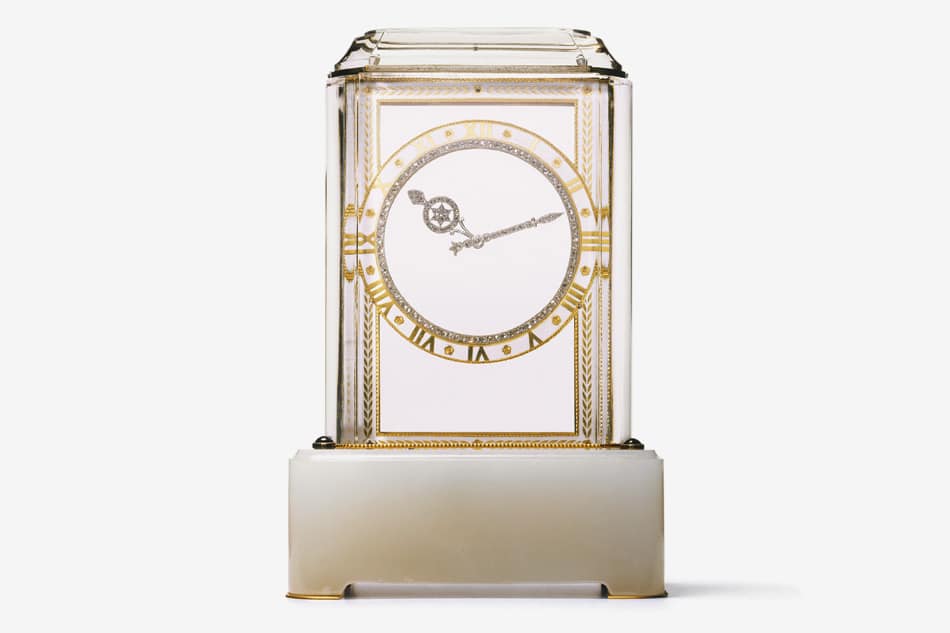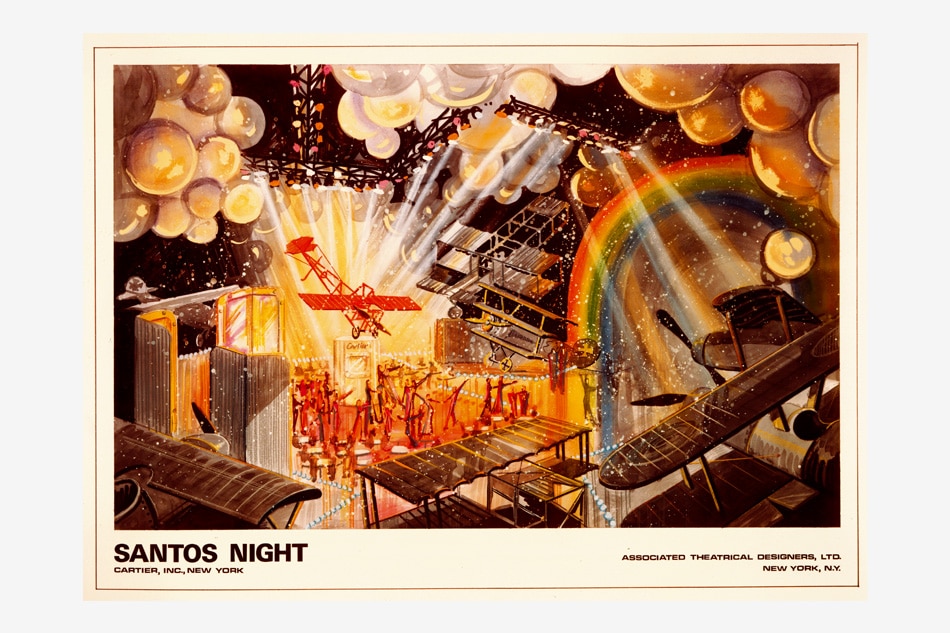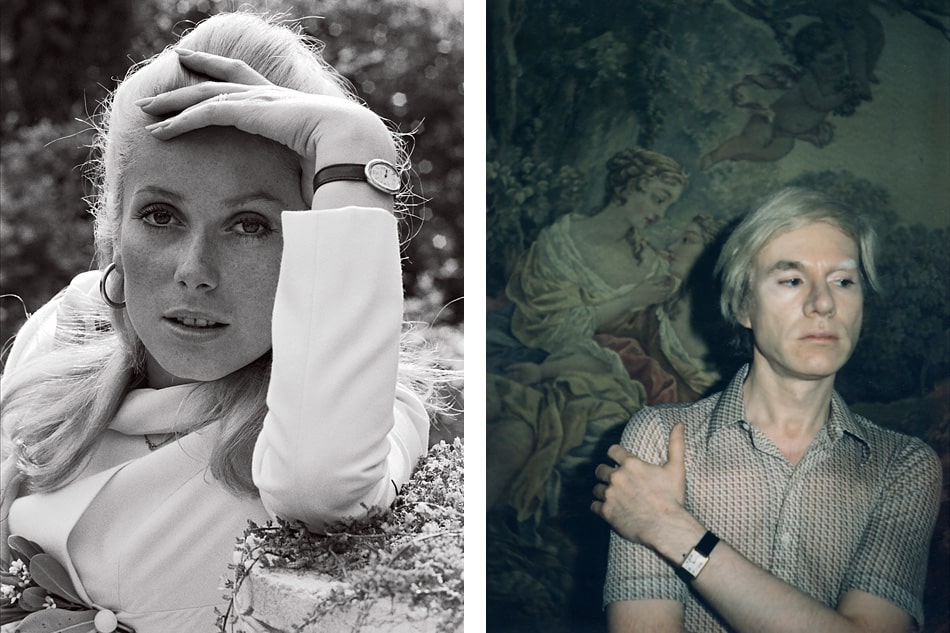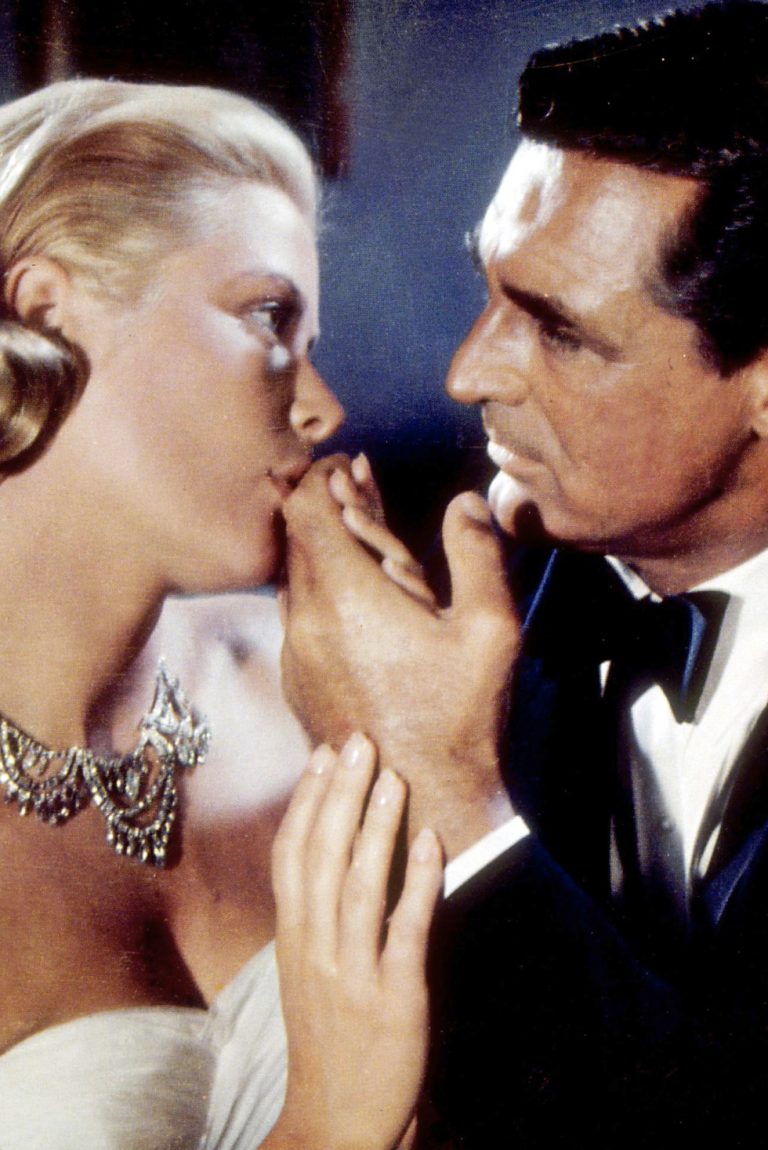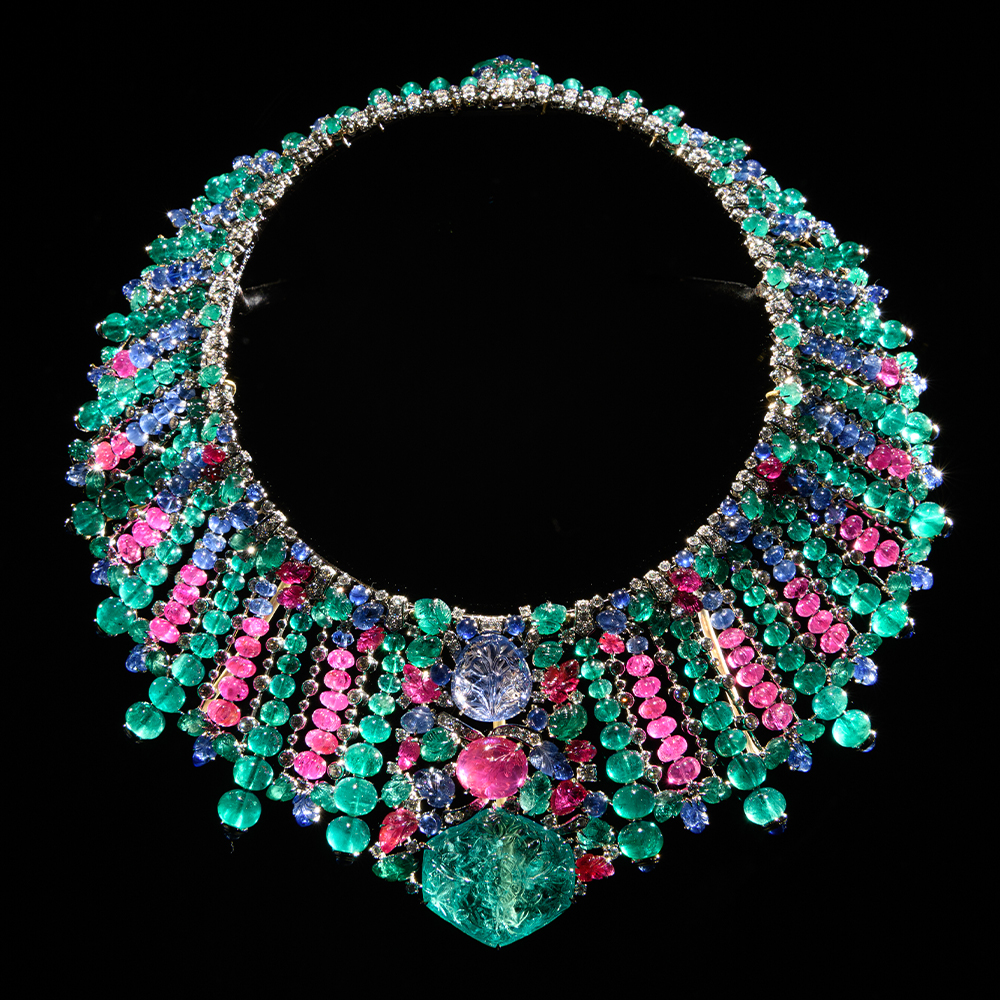
July 10, 2017Alberto Santos-Dumont, seen here aboard his airplane, No. 15, in 1907, inspired Louis Cartier to design a wristwatch so that the aviator could easily check the time while he was flying. Photo courtesy of the Cartier Archives © Cartier. Top: This rare 1912 Santos-Dumont wristwatch is one of the very first Santos models created by Cartier. Photo by Vincent Wulveryck, Cartier Collection © Cartier
At the beginning of the 20th century, as Louis Cartier took the reins at the venerable jewelry company founded by his grandfather in 1847, he was enthralled by something more than haute horlogerie and exquisite gems: the promise of a brave new age of design and technology. Among his friends were Gustave Eiffel, the visionary engineer, and Alberto Santos-Dumont, the Brazilian-born aviation pioneer and playboy who plied Parisian skies in flying ships of his own invention.
Indeed, it was a specific problem Santos-Dumont experienced while flying that spurred Cartier to design one of the first men’s wristwatches. The aviator often complained about the difficulty of piloting his aircraft while using a pocket watch, currently in fashion, to keep track of time during competitions like the Coupe Deutsch de la Meurthe (which he won in 1901 by flying from Parc Saint Cloud to the Eiffel Tower and back in under 30 minutes).
If he strapped a watch to his wrist, Cartier reasoned, Santos-Dumont could check the time at a glance while keeping his hands on the controls, which would be a good thing for a pilot who had crashed into the Trocadero Hotel. The wristwatch Cartier presented to his friend in 1904 — the Santos, which featured a clean, easy-to-read face and riveted square bezel — became one of the company’s most iconic designs and is still produced in a number of versions today.

Architect Norman Foster, who shares Louis Cartier’s enthusiasm for flight, curated the “Cartier in Motion” show. Portrait by Manolo Yllera
Cartier’s fascination with the cutting-edge architecture, engineering and technology of his time, and their consequent influence on his company’s designs, are the subject of “Cartier in Motion,” an exhibition on view at the Design Museum in London through July 28 that was curated by architect Norman Foster, known for his designs for the Reichstag in Berlin and the Hearst Tower in New York City. “When Deyan Sudjic, director of the Design Museum, first asked me to curate an exhibition on Cartier, I was quite surprised,” says Foster, who is a longtime flight enthusiast with a passion for inventive vehicles of all sorts — from Buckminster Fuller’s Dymaxion car, of which he built a fully functional copy in 2010, to the Virgin Galactic spacecraft. As he began researching Cartier and his circle of friends, he says, “I was fascinated by the many connections to the art, automobiles, aircraft, engineering and fashion of the period. It seemed to sum up the birth of modernism, which coincided with a lifestyle associated with motion and a zest for speed.”
The exhibition includes more than 170 objects and documents pulled from the Cartier archives, institutions and private collections. There are photographs, including one showing the towering dining table and chairs that Santos-Dumont had in his Paris home so guests could simulate the experience of dining in midair; flight-focused objects, like a gold cigarette case with a map given to pilot Dieudonné Costes to commemorate his flight across the South Atlantic Ocean in 1927; a selection of Cartier wristwatches illustrating how their design evolved in response to advances in transportation; and an exact miniature replica in gold of the Apollo Lunar Excursion Module that Cartier designed in 1969 to give to the first astronauts to land on the moon. There are also models, created especially for the exhibition, of vehicles commissioned by Louis Cartier, including an airplane, car and motorboat.

“Cartier in Motion,” currently on view at the Design Museum in London, explores the feats of engineering and technology that inspired the jewelry company’s most iconic pieces. Photo by Nigel Young / Foster + Partners
Foster’s favorite object in the show is a full-size replica of Santos-Dumont’s 1908 Demoiselle No. 20 aircraft. “I first had the opportunity to see it at the Musée de l’air et de l’espace in Le Bourget airport,” he says. “Its lightweight bamboo fuselage and delicate silk wings give it a distinctive form, similar to that of a damselfly, or demoiselle in French. It was the first airplane that was designed for sport.”
